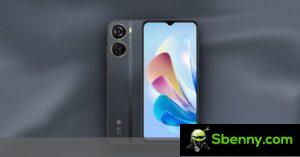Just a couple of days after Qualcomm lifted the veil on the new Snapdragon 8 Gen 3, Xiaomi announced the Xiaomi 14 series, the first phones to use the new flagship chipset. They will launch with HyperOS, the company’s next-generation software that will replace MIUI in the future. This means that on Wednesday of this week, several major “firsts” occurred when the two phones were launched on the Chinese market (the first flash sale sold out quite quickly).
Of course they will also go global, although it will be a couple of months before then. For now we will have to work with the prices for China: the Xiaomi 14 starts at 4,000 CNY for an 8/256 GB model, the Xiaomi 14 Pro costs 5,000 CNY for the base model with a 12/256 GB configuration.




Xiaomi 14Pro
Find out how these two compare. The main differences lie in the display and battery capacity, which is natural for phones of different sizes. The vanilla model has a 6.36″ panel and a 4,610 mAh battery, the Pro has a 6.73″ display and a 4,800 mAh battery. There are a few more details, but we’ll get to that: we just wanted to say “well done, Xiaomi” for not eliminating important features from the vanilla model like Samsung and Google do (just compare the S23/S23+ with the S23/S23+ S23 Ultra and Pixel 8 with Pixel 8 Pro).
The differences we talked about are that the main camera of the Pro model has a variable aperture (f/1.4-4.0), while that of the standard Xiaomi 14 is fixed (f/1.6). Other than that it’s the same hardware with a 50MP triple camera.

The smaller phone charges slower: 90W versus 120W, which translates to a full charge in 31 minutes instead of 18 minutes. The watt ratings make it seem closer than it actually is, especially considering that the Pro has a larger battery to fill. The small phone has less surface area for cooling, so the difference in charging speed is perhaps not too surprising.
The Pro model also has a special edition with a titanium frame, but most Pros will use aluminum frames just like the vanilla phone. The last difference concerns the materials of the front and back: the Pro uses a proprietary Xiaomi Longjing Glass on the front and glass on the back, the Vanilla model has a polycarbonate back panel (there is no word on the front glass) .





Xiaomi14
There are more Snapdragon 8 Gen 3 phones on the way. The Realme GT5 Pro, for example, but it won’t be as camera-focused. The vivo Oppo, OnePlus and the rest are definitely working on new devices too. This includes Samsung, which will presumably target a January launch. The other phones mentioned also likely won’t see global distribution until next year.


In summary: Xiaomi 14 • Xiaomi 14 Pro
Let’s start with the Xiaomi 14 Pro: could this be your next phone? If not, why?
And the Xiaomi 14? This could end up being one of the most capable flagships of its size.







Start a new Thread